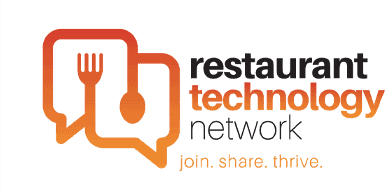Opening a restaurant and keeping it afloat can be a difficult proposition, even in the best of times. These aren’t the best of times. COVID-19 has got all of us working on plans B, C, D, and E just to keep the kitchens cooking and the front doors open. Despite the uncertainty of all that’s happened in 2020, there are specific business metrics that continue to be essential touchstones in the successful management of any restaurant. Here are five key metrics you should pay attention to regardless of other distractions.
1. Sales
Sales is a many-faceted label that includes a variety of metrics, including:
Break-even point: Break-even point is a critical metric for business owners on the lookout for investors, or for those who are opening a new restaurant. Put simply, the break-even point represents how much your restaurant must make in sales to earn back an investment. Once the break-even point is met, the same number can estimate the return on investment (ROI).
Break-even point can also be a helpful tool when considering the feasibility of new purchases. The investment cost doesn’t matter as much as the knowledge of how long it will take to pay it off.
Gross profit: Gross profit is calculated by subtracting the cost of goods sold from the restaurant’s total revenue for the month. The resulting amount can then be saved or put toward paying off expenses.
Historical sales: Historical sales data tracks how you’re doing over time, and it’s best followed by day, week, month and year. This KPI helps measure against past performance, identify trends, and point out your busiest times of the year. Long-term sales numbers can also produce more accurate planning and forecasting, and help reduce costs.
2. Cost of goods sold (CoGS)
The cost of goods sold metric is a calculation of your inventory during a specific time. It’s an important metric to track because it represents the largest expense restaurants have consistently. Tracking CoGS provides insight into how to minimize costs. Whether you need to negotiate with distributors or utilize more in-season ingredients, the cost of goods sold should always be top of mind for restaurant owners.
3. Table turn
“Table turn” is the time that passes from the time a guest is seated to the time they pay the check and leave. Faster table turn equals larger profits for your restaurant. Tracking this metric over time will help reveal patterns and identify areas where improvements can be made. Of course, guests should never be hurried along, but an efficient kitchen and quick turnaround on the check are both excellent ways to ensure table turn isn’t hurting your bottom line.
4. Employee turnover rate
Employee turnover rate is the percentage of your staff that left or moved on over a specific time. Turnover is a struggle for the hospitality industry in general; a recent Bureau of Labor Statistics report found the industry-wide turnover rate for food service to be 74.9%. That’s three-quarters of food service industry staff leaving their jobs in any given time frame (in the case of this study, the 2018 calendar year).
To calculate your employee turnover rate, divide the number of employees separated from your business (quits, terminations, and so on) by your total number of employees. Then multiply that result by 100. In other words, a restaurant that lost 10 employees from a staff of 30 in a given time has an employee turnover rate of 33.33%.
Every time an employee leaves your business, it costs money to search for, hire, and train a replacement.
5. Prime cost
Prime cost is the combination of your labor cost and your (CoGS) shown as a percentage of total sales. To calculate prime cost, add the total dollar amount expended for labor to the total dollar amount of your CoGS over a specific time period. Divide this number by your total sales for the same time period and multiply the result by 100.
Most restaurants aim for a prime cost of 55% to 60% to maintain profitability. If your prime cost is higher than 60%, you need to trim either your CoGS or labor. A number below 55% could mean that your operation is understaffed or overpriced.
As the industry continues to navigate the global health crisis, businesses should avoid distractions and focus on essential touchstones. No matter the headlines, focusing on the above key metrics will ensure your restaurant survives these unprecedented times.





